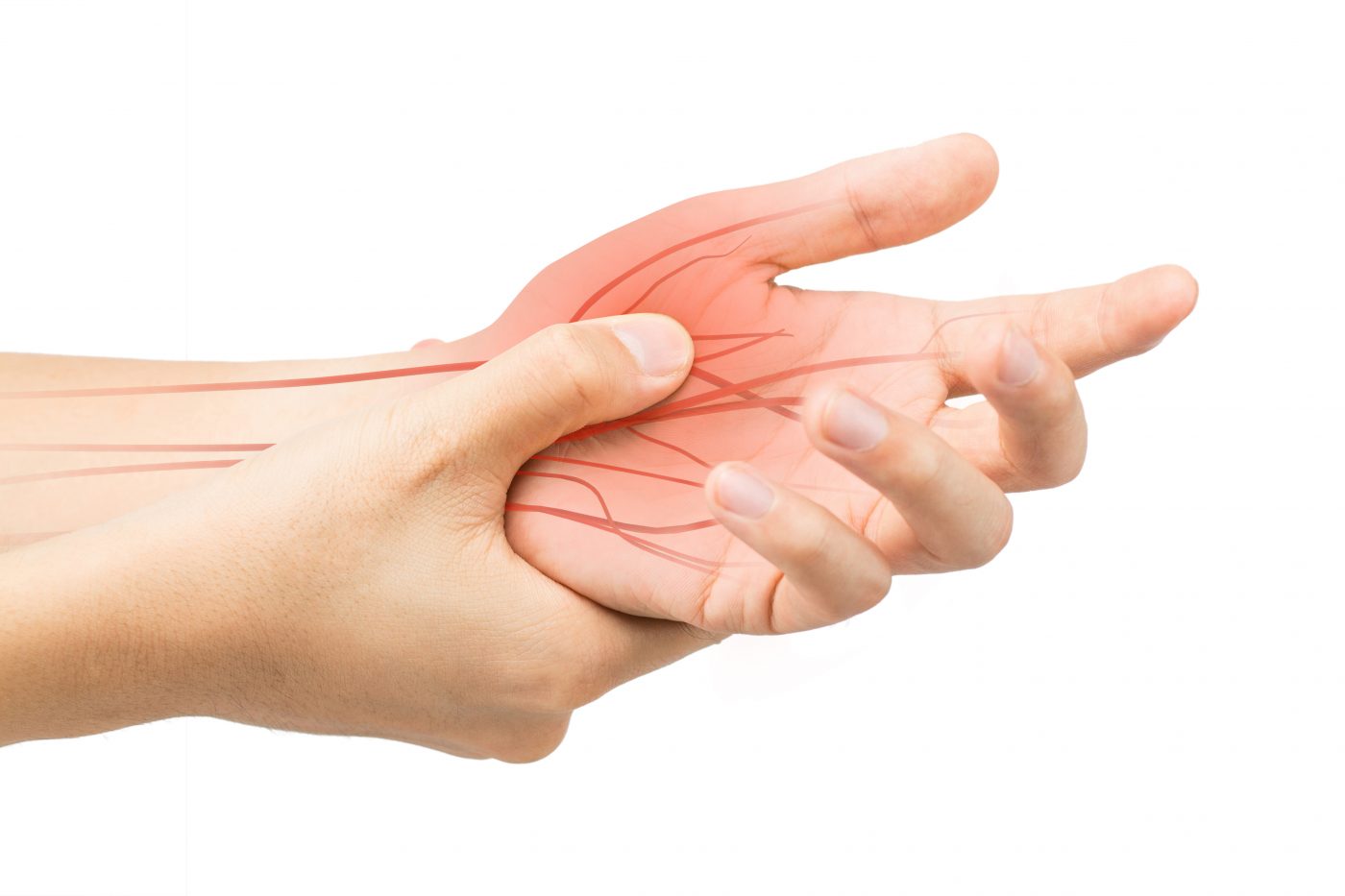Peripheral Nerve Damage Common Within First 10 Years, Review Finds
Written by |

SoftSheep/Shutterstock
Nearly 30% of scleroderma patients have nerve damage outside of the brain and spinal cord — called peripheral neuropathy — and it most frequently appears in the first decade after disease onset, according to a review study.
Notably, this frequency is higher than that reported for the general population, the researchers said, suggesting that scleroderma patients are at higher risk of “a wide spectrum of clinical disorders affecting sensory, motor, and autonomic peripheral nerve fibers [that control unconscious body functions].” That means that people with scleroderma have an increased likelihood of nerve-related problems, with carpal tunnel syndrome as the most common one, the study found.
In addition, while nerve pressure-related neuropathies can be successfully treated with decompression surgery, there is limited and conflicting evidence regarding other interventions for treating peripheral nerve damage in this patient population.
These findings highlight the need for further research on peripheral neuropathy in scleroderma patients, as well as the urgency for appropriately controlled clinical trials to test the effectiveness of several therapeutic interventions, the researchers said.
The review study, “Epidemiology and treatment of peripheral neuropathy in systemic sclerosis,” was published in The Journal of Rheumatology.
Peripheral nerve disorders are relatively common, affecting an estimated 2.4% of the general population. They generally worsen and become more prevalent with age, with diagnoses in up to 8% of the elderly population.
Such disorders affect nerves that control movement, sensations, and/or body functions that occur unconsciously, such as heart rate, digestion, breathing rate, and sexual arousal (called autonomic nerves).
Management of peripheral neuropathy is “directed first at the specific cause if it is treatable and second at the alleviation of symptoms, including managing neuropathic pain and bracing and physical therapy for weakness,” the researchers wrote.
Also known as systemic sclerosis (SSc), scleroderma is a highly variable autoimmune disease that can affect virtually every organ and system in the body. It is characterized by increased inflammation, blood vessel abnormalities, and tissue scarring.
Neurologic involvement in scleroderma may include peripheral, autonomic, skin-related, and compression-related nerve damage. However, the frequency, characteristics, and treatment of peripheral neuropathies in this patient population remain poorly understood.
To address this knowledge gap, researchers in Canada systematically reviewed published studies, up through September 2020, reporting the frequency, characteristics, risk factors, and treatments of peripheral nerve damage in scleroderma patients.
From all of the studies accessed and reviewed for eligibility, 113 were included in the analysis. All told, the included studies covered 949 people with scleroderma who had peripheral neuropathy — out of 2,143 patients. Most were treatment-focused studies, followed by case reports and observational studies; no randomized clinical trials were identified.
The results showed that the pooled frequency of peripheral neuropathy in scleroderma was 27.4%, highlighting that the condition “is not uncommon in SSc,” and that it “appears to be more common in SSc than the general population,” the researchers wrote.
Patients with peripheral nerve damage had a mean age of 48.5, with only five juvenile cases reported. The neurologic condition was detected mostly in the first decade after the diagnosis or scleroderma diagnosis — at a mean of 8.85 years from disease onset.
Compression neuropathies, or those caused by direct pressure on a nerve, were reported in 26.5% of the studies, with carpal tunnel syndrome being the most common and affecting 22.8% of patients. Carpal tunnel syndrome is caused by the compression of the median nerve in the wrist and leads to numbness, tingling, or weakness in the hand. In some of the cases reviewed, the carpal tunnel syndrome started prior to the patient’s scleroderma diagnosis, the researchers found.
The most common non-compression neuropathy was trigeminal neuropathy — a condition that affects the trigeminal nerve, which carries sensation from the face to the brain — occurring in 10.5% of patients.
Notably, calcinosis cutis, or the formation of calcium deposits in the skin, was the most common risk factor of compression neuropathies.
Risk factors for non-compression neuropathies included advanced diffuse cutaneous disease, the presence of SSc-associated anticentromere antibodies, and problems in nerve blood supply (ischemia). Iron deficiency anemia, silica inhalation-related lung disease, and kidney problems also were identified as risk factors for such neuropathies.
Non-compression neuropathies also were associated with adverse effects from certain medications, such as metoclopramide, which is marketed under several brand names — namely Metozolv ODT and Reglan in the U.S. — and pembrolizumab, sold as Keytruda.
Further analysis suggested that age was the most important predictor of peripheral neuropathy in these patients, followed by being male, being female, and disease duration.
Successful treatment of peripheral neuropathies was reported in 73 scleroderma patients.
The most common and successful intervention for compression neuropathies was decompression surgery. Therapeutic interventions for non-compressive neuropathies included immunosuppressive treatments — with prednisone as the most effective — anti-seizure medications, transcutaneous electrical nerve stimulation, and tricyclic antidepressants.
While the data supported decompression surgery as an effective intervention for compression neuropathies, “evidence supporting immunosuppressive and [anti-seizure medications] to treat peripheral neuropathy in SSc is limited and conflicting,” the researchers wrote.
Overall, the findings provide “the signal of effect to justify [further research] to evaluate the efficacy of these interventions,” the team concluded.
“Peripheral neuropathy in SSc warrants better investigation of epidemiology and treatment,” the researchers wrote, saying their study is “justification for randomized trials to definitively address this important area.”







